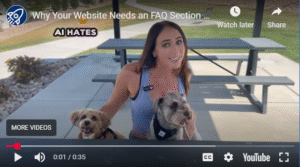Content Repurposing: Get More from Every Blog, Video, and Post
Content creation is time-consuming, but its impact doesn’t have to be short-lived. Repurposing content allows businesses to maximize their efforts, reach wider audiences, and improve their return on investment (ROI). By transforming one piece of content into multiple formats, brands can maintain a consistent message while engaging users across different platforms.
Why Content Repurposing Matters
Creating high-quality content takes effort. Instead of constantly producing new material, repurposing allows you to breathe new life into existing content. It extends your reach by catering to different audience preferences—some users prefer reading in-depth blog posts, while others engage better with videos, podcasts, or visual infographics. It also increases visibility by sharing repurposed content across multiple channels, making it more likely to be discovered by a wider audience. Additionally, repurposing saves time and resources, ensuring that your content works harder for you without requiring constant reinvention. From an SEO perspective, updating and republishing content can improve search rankings, drive organic traffic, and boost engagement over time.
Best Strategies for Content Repurposing
Transforming Blog Posts into Multi-Format Content
A well-written blog post doesn’t have to remain just an article. It can be reshaped into various formats to reach different audiences. Shorter excerpts can be posted on LinkedIn as professional insights, while key takeaways can be turned into visually appealing social media graphics. You can also summarize your post in an infographic, making it easier for visual learners to digest the information.
Another effective approach is repackaging blog content into short-form videos where you discuss the main points in an engaging and conversational way. Platforms like youtube ads, instagram ads, and tiktok ads can amplify the reach of these videos to targeted audiences. If the topic is in-depth, consider using it as a foundation for a podcast episode or a webinar.
Converting Webinars & Live Streams into Evergreen Content
Live content offers valuable insights but often has a short lifespan. Instead of letting a webinar or live stream fade into obscurity, repurpose it into multiple formats. The full-length video can be uploaded to YouTube, while key highlights can be edited into shorter clips for social media platforms like Instagram Reels or TikTok. If the discussion contains detailed insights, transcribe and summarize it into a well-structured blog post. Additionally, you can create a downloadable PDF guide or lead magnet based on the session’s main points, offering extra value to your audience while growing your email list.
Refreshing & Updating Older Content
Not all content needs to be completely reinvented—sometimes, updating and enhancing existing content can yield significant benefits. Revisiting older blog posts to update statistics, add recent trends, and refine the message keeps the content relevant and engaging. Expanding sections with additional insights or examples can make the content more comprehensive. Visual elements such as fresh images, updated infographics, or embedded videos enhance readability. Republishing and resharing improved content across social media platforms helps attract new audiences and drive more traffic.
Expanding Social Media Content into Long-Form Pieces
Often, valuable insights shared in short-form social media posts can serve as inspiration for more in-depth content. A popular tweet or LinkedIn post with strong engagement can be expanded into a full-length blog article. Frequently asked customer questions can be addressed in a comprehensive guide or turned into a YouTube Q&A session. Even comment discussions on social media can reveal recurring themes or concerns that merit a dedicated piece of content. By analyzing audience interactions, you can identify opportunities to create content that resonates with your followers on a deeper level.
Tools to Simplify Content Repurposing
- Canva – Ideal for designing eye-catching infographics and social media visuals.
- Descript – Simplifies video and podcast editing with transcription features.
- Grammarly & Hemingway Editor – Help refine written content for clarity and readability.
- Anchor – Easily converts blog posts into podcast episodes and distributes them.
- Hootsuite & Buffer – Great for scheduling and managing repurposed content across multiple platforms.
Measuring the Success of Repurposed Content
To ensure your repurposing efforts are effective, track key performance indicators (KPIs). Monitor website traffic to measure how repurposed content drives visitors to your site. Analyze social media engagement metrics such as likes, shares, and comments to gauge audience response. Keep an eye on SEO performance by checking improvements in search rankings for updated blog posts. If you’re using lead magnets, track sign-ups, downloads, or conversions to measure their impact on your marketing strategy. Regularly reviewing these metrics allows you to refine your repurposing approach for maximum impact.
Final Thoughts
Content repurposing is not just a time-saving tactic—it’s a smart, strategic approach to maximizing the value of every piece of content you create. From boosting SEO rankings to expanding your audience reach through social media marketing management and targeted ppc ads, repurposing helps your marketing work harder.
Instead of letting high-quality content fade away, give it new life and extend its impact. Start repurposing today to make the most of your content efforts—schedule your consultation with Utah Digital Marketing Experts to plan your next repurposing strategy.




